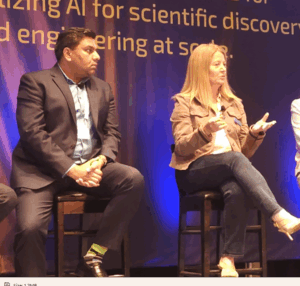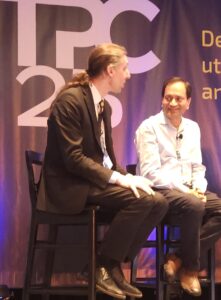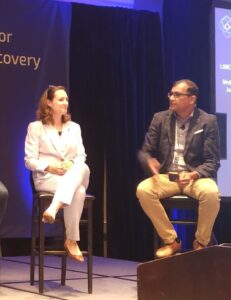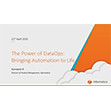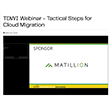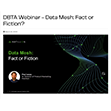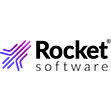
Our Shared AI Future: Industry, Academia, and Government Come Together at TPC25
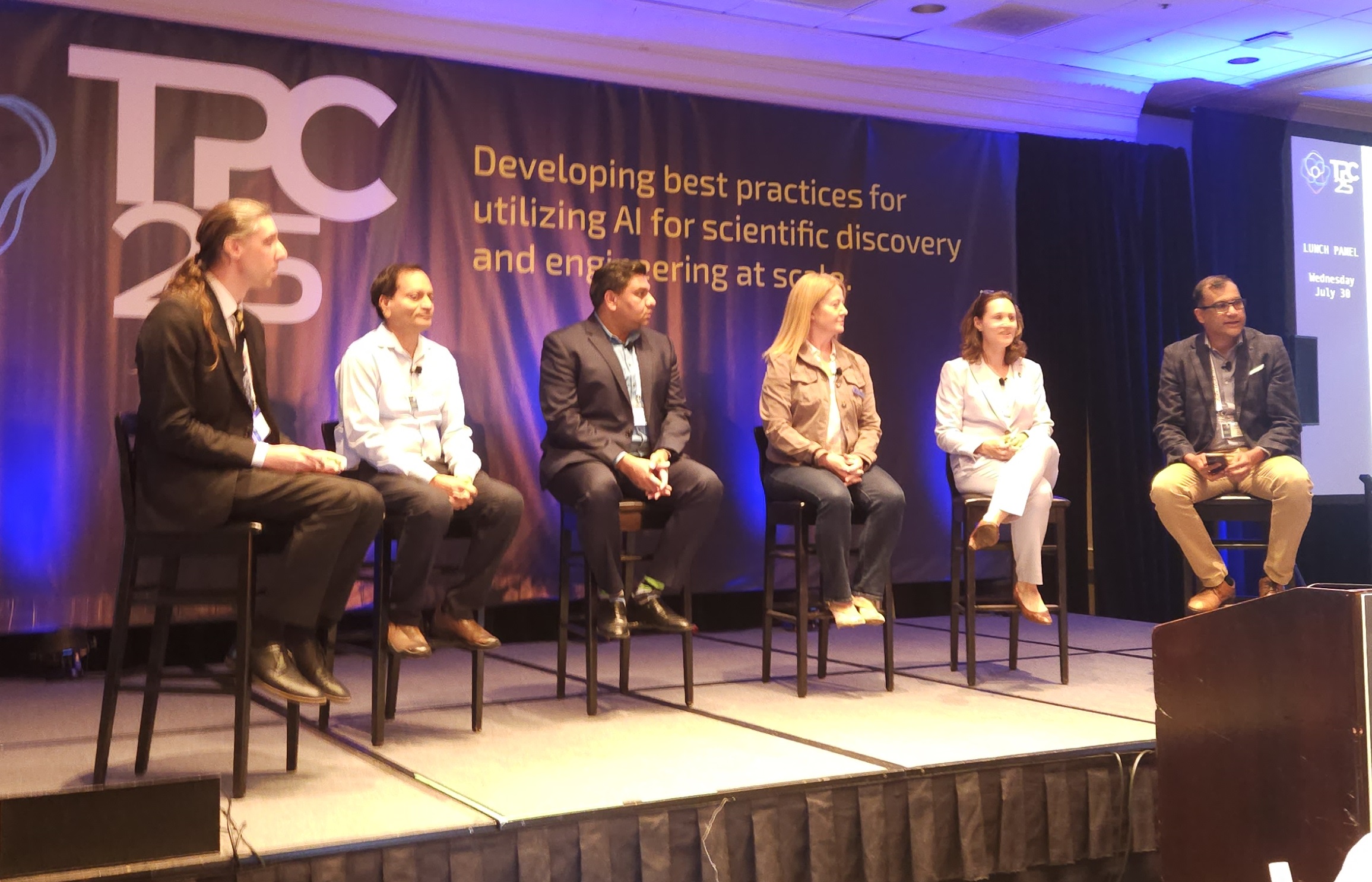
Many of the advances in AI recently have come from the private sector, specifically the handful of giant tech firms with the resources and expertise to develop massive foundation models. While those advances have generated tremendous excitement and promise, a different group of stakeholders is looking to drive future AI breakthroughs in scientific and technical computing, which was a topic of some discussion this week at the Trillion Parameter Consortium’s TPC25 conference in San Jose, California.
One TPC25 panel discussion on this topic was especially informative. Led by moderator Karthik Duraisamy of the University of Michigan, the July 30 talk centered on how government, academia, national labs, and industry can work together to harness recent AI developments to drive scientific discovery for the betterment of the United States and, ultimately, humankind.
Hal Finkel, the director of the Department of Energy’s computational science research and partnerships division, was unequivocal in his department’s support of AI. “All parts of DOE have a critical interest in AI,” Finkel said. “We are investing very heavily in AI, and have been for a long time. But things are different now.”
DOE currently is looking at how it can leverage the latest AI enhancement to accelerate scientific productivity across a range of disciplines, Finkel said, whether it’s accelerating the path to superconductors and fusion energy or advanced robotics and photonics.
“There is just a huge amount of area where AI is going to be important,” he said. “We want to be able to leverage our supercomputing expertise. We have exascale supercomputers now across DOE and several national laboratories. And we have testbeds, as I mentioned, in AI. And we’re also looking at new AI technologies…like neuromorphic technologies, things that are going to be important for doing AI at the edge, embedding in experiments using advanced robotics, things which could be dramatically more energy efficient than the AI that we have today.”
Vishal Shrotriya, a business development executive with Quantinuum, a developer of quantum computing platforms, is looking forward to the day when quantum computers, working in concert with AI algorithms, are able to solve the toughest computational problems across areas like material science, physics, and chemistry.
“Some people say that true chemistry is not possible until we have quantum computers,” Shrotriya said. “But we’ve done such amazing work without actually having the ability to stimulate even small molecules precisely. That is what quantum computers will allow you to do.”
The combination of quantum computers and foundation models could be groundbreaking for molecular scientists by enabling them to create new synthetic data from quantum computers. Scientists will then be able to feed that synthetic data back into AI models, creating a powerful feedback loop that, hopefully, drives scientific discovery and innovation.
“That is a big area where quantum computers can potentially allow you to accelerate that drug development cycle and move away from that trial and error to allow you to precisely, for example, calculate the binding energy of the protein into the site in a molecule,” Shrotriya said.
A capable defender of the vital importance of data in the new AI world was Molly Presley, the head of global marketing for Hammerspace. Data is absolutely critical to AI, of course, but the problem is, it’s not evenly distributed around the world. Hammerspace helps by working to eliminate the tradeoffs inherent between the ephemeral representation of data in human minds and AI models, and data’s physical manifestation.
Standards are vitally important to this endeavor, Presley said. “We have Linux kernel maintainers, multiple of them on our staff, driving a lot of what you would think of as traditional storage services into the Linux kernel, making it where you can have standards based access that any data, no matter where it was created, [so that it] can be visible and used with the appropriate permissions in other locations.”
The world of AI could use more standards to help data be used more broadly, including in AI, Presley said. One topic that has come up repeatedly on her “Data Unchained” podcast is the need for greater agreement on how to define metadata.
“The guests almost every time come up with standardization on metadata,” Presley said. “How a genomics researcher ties their metadata versus an HPC system versus in financial services? It’s completely different, and nobody knows who should tackle it. I don’t have an answer.
“This type of community probably is who could do it,” Presley said. “But because we want to use AI outside of the location or the workflow or the data was created, how do you make that metadata standardized and searchable enough that someone else can understand it? And that seems to be a big challenge.”
The US Government’s National Science Foundation was represented by Katie Antypas, a Lawrence Berkeley National Lab employee who was just renamed director of the Office of Advanced Cyber Infrastructure. Anytpas pointed to the role that the National Artificial Intelligence Research Resource (NAIRR) project plays in helping to educate the next generation of AI experts.
“Where I see a huge challenge is actually in the workforce,” Antypas said. “We have so many talented people across the country, and we really need to make sure that we’re developing this next generation of talent. And I think it’s going to take investment from industry partnerships with industry as well as the federal government, to make those really critical investments.”
NAIRR started under the first Trump Administration, was kept under the Biden Administration, and is “going strong” in the second Trump Administration, Antypas said.
“If we want a healthy AI innovation ecosystem, we need to make sure we’re investing really that fundamental AI research,” Antypas said. “We didn’t want all of the research to be driven by some of the largest technology companies that are doing amazing work. We wanted to make sure that researchers across the country, across all domains, could get access to those critical resources.”
The fifth panelist was Pradeep Dubey, an Intel Senior Fellow at Intel Labs and director of the the Parallel Computing Lab. Dubey sees challenges at multiple levels of the stack, including foundation model’s inclination to hallucinate, the changing technical proficiency of users, and where we’re going to get gigawatts of energy to power massive clusters.
“At the algorithmic level, the biggest challenge we have is how do you come up with a model that is both capable and trusted at the same time,” Dubey said. “There’s a conflict there. Some of these problems are very easy to solve. Also, they are just hype, meaning you can just put the human in the loop and you can take care of those… the problems are getting solved and you’re getting hundreds of year’s worth of speedup. So putting a human in the loop is just going to slow you down.”
AI has come this far primarily because it has not figured out what’s computationally and algorithmically hard to do, Dubey said. Solving those problems will be quite difficult. For instance, hallucination isn’t a bug in AI models–it’s a feature.
“It’s the same thing in a room when people are sitting and some guy will say something. Like, are you crazy?” the Intel Senior Fellow said. “And that crazy guy is often right. So this is inherent, so don’t complain. That’s exactly what AI is. That’s why it has come this far.”
Opening up AI to non-coders is another issue identified by Dubey. You have data scientists who prefer to work in an environment like MATLAB gaining access to GPU clusters. “You have to think of how you can take AI from library Cuda jail or Cuda-DNN jail, to decompile in very high level MATLAB language,” he said. “Very difficult problem.”
However, the biggest issue–and one that was a recurring theme at TPC25–was the looming electricity shortage. The huge appetite for running massive AI factories could overwhelm available resources.
“We have enough compute at the hardware level. You cannot feed it. And the data movement is costing more than 30%, 40%,” Dubey said. “And what we want is 70 or 80% energy will go to moving data, not computing data. So now let us ask the question: Why am I paying the gigawatt bill if you’re only using 10% of it to compute it?”
There are big challenges that the computing community must address if it’s going to get the most out of the current AI opportunity and take scientific discovery to the next level. All stakeholders–from the government and national labs, from industry to universities–will play a role.
“It has to come from the broad, aggregated interest of everyone,” the DOE’s Finkel said. “We really want to facilitate bringing people together, making sure that people understand where people’s interests are and how they can join together. And that’s really the way that we facilitate that kind of development. And it really is best when it is community-driven.”
Related Items:
TPC25 Preview: Inside the Conference Shaping Frontier AI for Science
AI Agents To Drive Scientific Discovery Within a Year, Altman Predicts


